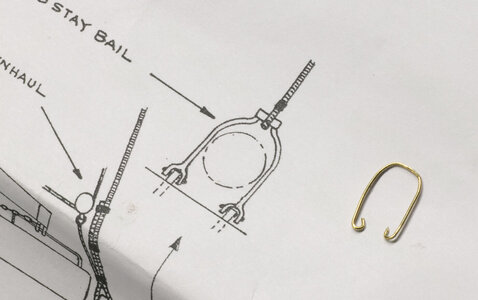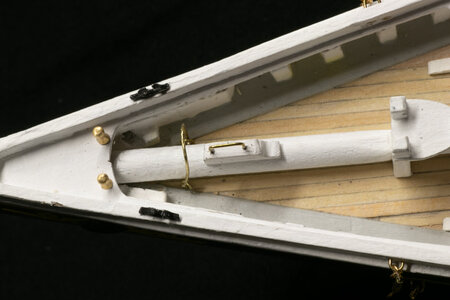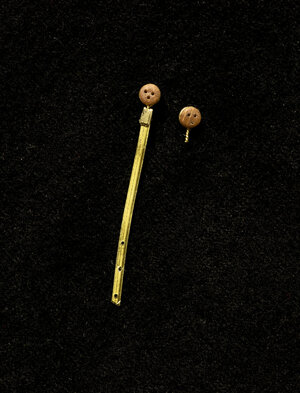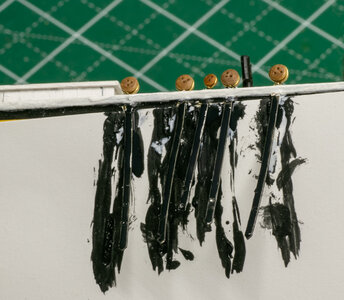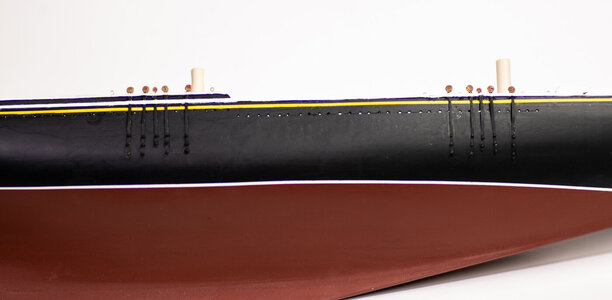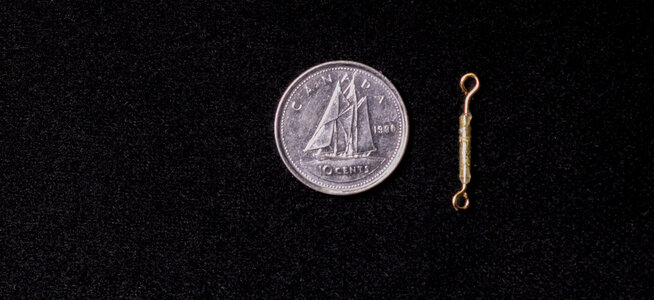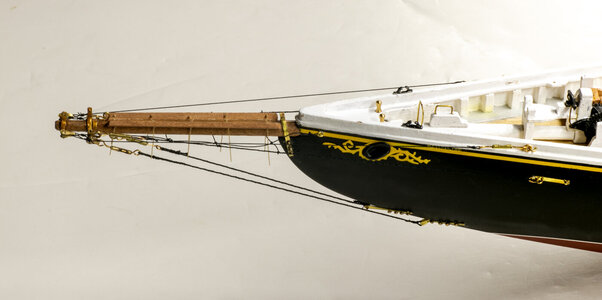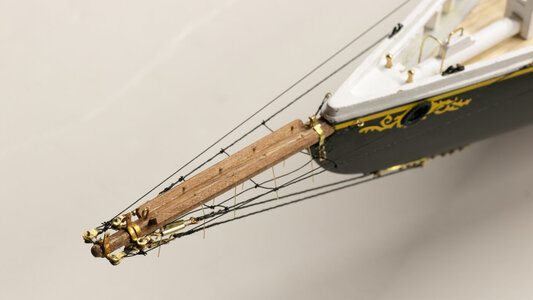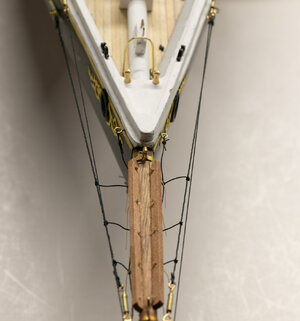Another job that has caused some trepidation during the build has been completed - Building and Mounting the deadeyes and chain plates. I followed the method used by
The Suburban Modeler to make a simplified version of the connection of deadeyes to chainplates. I used wire to surround the deadeyes and twisted it to form a tail on the deadeye. I drilled a hole near the end of the brass strip used for the chain plate, inserted the tail into the hole and bent over the end of the brass strip to hold the tail in place. I crimped the folded portion as tight I as could.
View attachment 379790
Next I drilled 3 holes for the nails used to hold the assembly to the hull and finally trimmed the lower end to a point (not yet completed fully in the first picture).
Now the part that had been causing me worries for some time. I drilled 2 holes in the edge of the rail and cut out between them with a new knife blade. This turned out to be fairly easy for the foremast deadeyes as there was only one rail to go through. The holes for the mainmast deadeyes had to go through both the upper rail and the main rail. After some repairs to the hull rails where I was either too far outboard or inboard and I had all chain plates through the rails. Major sigh of relief on my part here. I painted the chain plates with primer and then black using a piece of thick (photo) paper under the plates.
View attachment 379787
Finally, the chain plates were nailed & glues to the hull using brass nails (0.5 mm) and touch up painting was completed. The starboard side is shown in the last picture of this post. I put on a few coats of satin varnish after taking the picture.
View attachment 379789
Not all of the deadeyes are properly aligned, but they can still be turned in the wire loop to the desired orientation when the deadeye lanyards are attached. Other than the catheads and anchors, this completes the hull and deck fittings of the
Bluenose.




